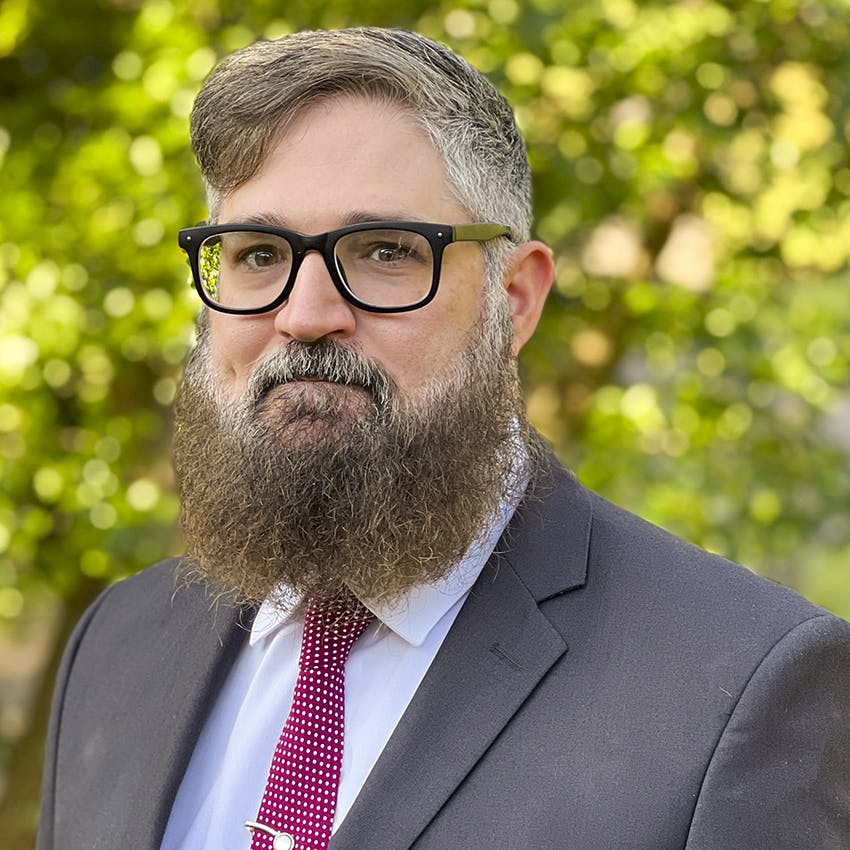DOD’s Tech Advantage Hinges on Commercial Collaboration, Says DIU Director
Seamless public-private sector integration is crucial for national security to compete with global powers, DIU Director Doug Beck said.

The traditional defense pathways for technology development are no longer sufficient to maintain a national security advantage, DIU Director Doug Beck said during a panel at the Special Competitive Studies Project AI+ Expo in Washington, D.C. on Monday. The Defense Department needs to better connect the public and private sectors to translate commercial technology into actionable solutions, Beck added.
“AI, cyberspace, energy, biotech, quantum and emerging areas like advanced manufacturing are moving faster, and probably always will, in support of the relentless demands of billions of consumers. [The private sector moves faster] than they ever could in our purely bespoke, defense-specific pathways,” Beck said. “That’s why we need both.”
Private-Public Partnerships Speed Tech Delivery
Beck added that a robust collaboration between government and commercial tech giants would have been “unimaginable” for most of American history. The evolution is driven by a recognition, dating back to former Secretary of Defense Ash Carter, that national security depends on leveraging the power of the commercial tech sector, especially during the global competition with China, Russia and other powers. DIU, Beck said, is facilitating those partnerships to further the defense mission.
Google Global Affairs President Kent Walker added that China’s technological advancements require better innovation in the American national security environment. Walker cited Australian Strategic Policy Institute’s technology survey that shows while the U.S. led in 57 out of 64 key strategic technologies in 2005, China leads in 60 of 64 in the most recent survey.
Walker called it a “wake-up call” that reemphasized the importance of public-private collaboration to deliver innovation at speed to the DOD.
“We need to get our policy organization to work through issues with regard to copyright and privacy. We would like to actually facilitate American investment and continue leadership in AI,” Walker added. “We need to make sure that we have widespread adoption.”
Inside DIU 2.0
Beck noted that DIU’s evolution, since its 2015 birth as DIUx, has proven that DOD can build bridges. Currently in its 2.0 phase, DIU identifies critical gaps in defense capabilities and rapidly deploys commercial solutions to address them, ensuring that the U.S. can effectively compete.
“DIU 2.0 is about proving that you could take real military problems and solve them with commercially derived technology, using authorities we already have on the books,” Beck said. “We’ve now done that hundreds of times, over 500 at DIU and maybe hundreds of other organizations and other partners.”
Leveraging AI for Future Defense
The transformative impact of AI on the battlefield is critical to DIU’s mission, Beck said, and AI is central to every technology portfolio within DOD. Projects like Thunderforge are leveraging the latest commercial generative AI capabilities to revolutionize military planning, enabling planners to operate at the “scale, speed and complexity of the modern battlefield,” said Beck.
“That is really a critical effort in [bringing commercial tech into DOD] across classification domains. There’s a whole bunch of companies who are involved in that, from large to much smaller,” he added.
DOD needs rapid scalability for ongoing conflicts, Beck added. While the DOD Replicator program aims to deploy thousands of unmanned systems within 18-24 months, the sheer volume of daily drone consumption necessitates an even faster pace, especially in war zones like Ukraine. DOD needs to evolve its systems to handle this need, he said.
“Most of what’s going on in Ukraine right now is basically first-person view drones that are pretty simple and awful with Chinese parts and all that kind of stuff, but nevertheless, they’re consuming 4,000 a day,” said Beck. “And we’ve got to be in a completely different universe than the one that we are in right now.”
Reassessing DOD’s Risk Relationship
National security’s core challenge isn’t just threats, but a fundamental misunderstanding of risk rooted in DOD culture, Beck said. Much of what DOD calls “risk” is actually uncertainty, he added, and the department needs to reassess its relationship to real risk.
“We’ve got to get better at taking process risk, financial risk and reputational risk,” said Beck. “[We need to be better at] taking those kind of risks now so that we don’t translate them into real risks to the airmen, guardians, soldiers, sailors, Marines and Coast Guardsmen that have to fight a war, if we go fight. It’s all about changing our culture around risk and being willing to take the right ones.”
This is a carousel with manually rotating slides. Use Next and Previous buttons to navigate or jump to a slide with the slide dots
-

Pentagon Pushes AI, Autonomy, Golden Dome in Defense Plan
War Secretary Pete Hegseth discussed the upcoming National Defense Strategy outlining faster U.S. military modernization.
3m read -

Securing AI Amid Rising Risks
NIST and Maximus explore how AI is transforming threat detection, identity protection and edge security and discuss how agencies can keep pace with the rapid tech changes.
20m watch -

Federal Modernization Hinges on Trusted Data, Simplified Procurement
Agency leaders are rethinking modernization strategies to meet the demands of data-driven missions and increasingly sophisticated cyber threats.
18m watch -

AI-Driven Modernization is Boosting Patient Satisfaction
UK public health leader says that AI and cloud tools can reshape patient interactions and back-office operations.
3m read








